-
 UV11W High-efficiency Intelligent UV Water Sterilizer Cat:Ultraviolet Water Sterilizer
UV11W High-efficiency Intelligent UV Water Sterilizer Cat:Ultraviolet Water SterilizerThe UV11W High-efficiency Intelligent UV Water Sterilizer is an advanced water purification system that offers convenience and reliability. This steri...
See Details -
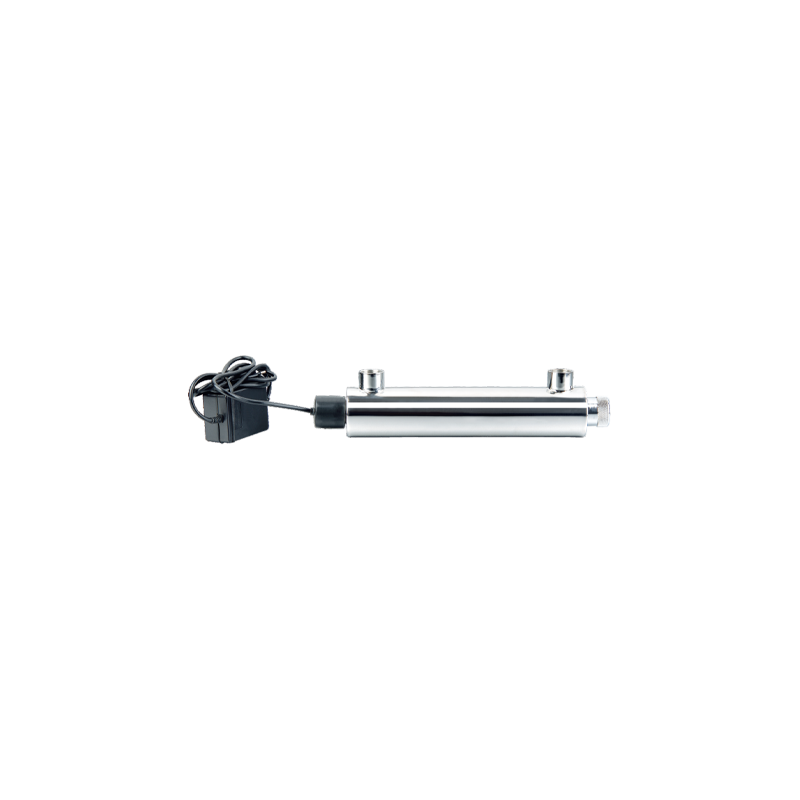 UV16W-A Household Stainless Steel UV Water Sterilizer Cat:Ultraviolet Water Sterilizer
UV16W-A Household Stainless Steel UV Water Sterilizer Cat:Ultraviolet Water SterilizerThe UV16W-A Household Stainless Steel UV Water Sterilizer is an innovative solution for ensuring safe and pure water in your home. Designed with durab...
See Details -
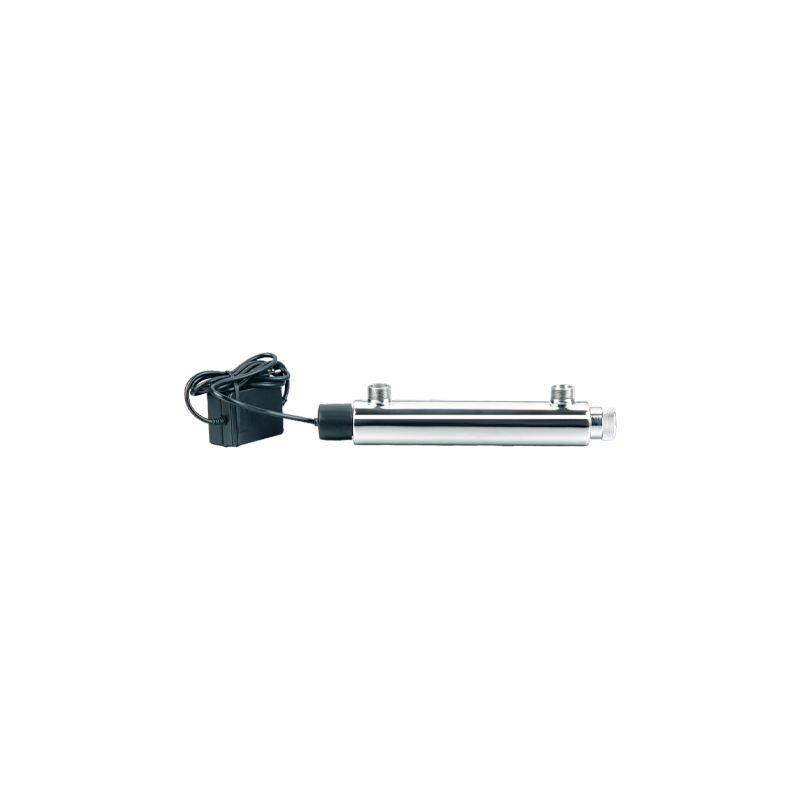 UV16W-B 304 Stainless Steel Water Purifier Ultraviolet Water Sterilizer Cat:Ultraviolet Water Sterilizer
UV16W-B 304 Stainless Steel Water Purifier Ultraviolet Water Sterilizer Cat:Ultraviolet Water SterilizerUV16W-B 304 Stainless Steel Water Purifier Ultraviolet Water Sterilizer is an efficient water treatment equipment based on advanced ultraviolet disinf...
See Details -
 UV25W Stainless Steel Ultrafiltration Pre-Filtration UV Sterilizers For Water Cat:Ultraviolet Water Sterilizer
UV25W Stainless Steel Ultrafiltration Pre-Filtration UV Sterilizers For Water Cat:Ultraviolet Water SterilizerUV25W Stainless Steel Ultrafiltration Pre-Filtration UV Sterilizers For Water uses high-quality stainless steel materials, which have superb corrosion...
See Details -
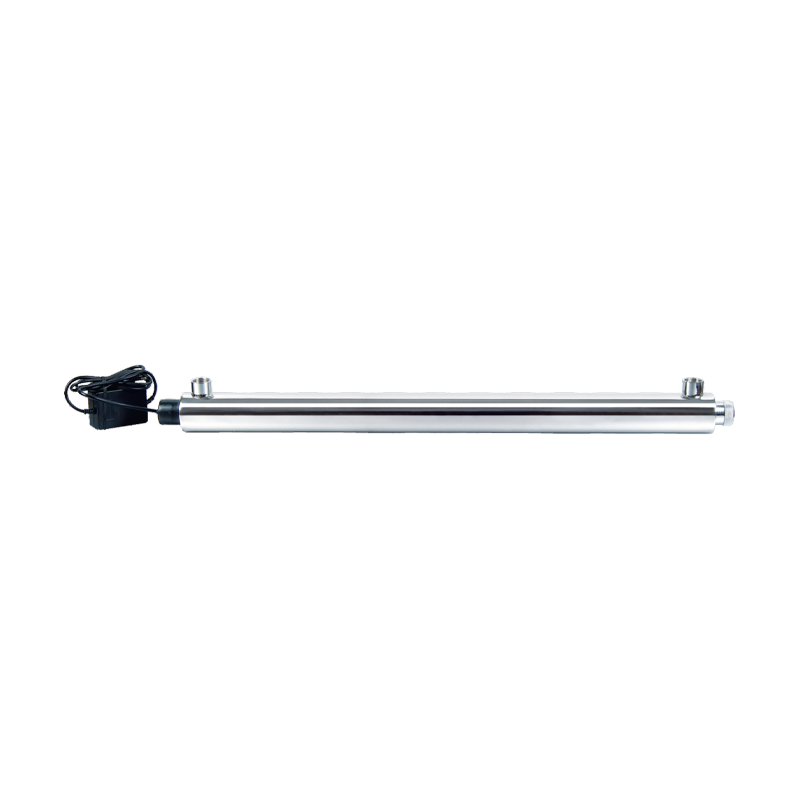 UV30W-55W Automatic Ultraviolet Sterilizer UV Filtration For Drinking Water Cat:Ultraviolet Water Sterilizer
UV30W-55W Automatic Ultraviolet Sterilizer UV Filtration For Drinking Water Cat:Ultraviolet Water SterilizerThe core advantage of UV30W-55W Automatic Ultraviolet Sterilizer UV Filtration For Drinking Water lies in its efficient and rapid disinfection capabil...
See Details -
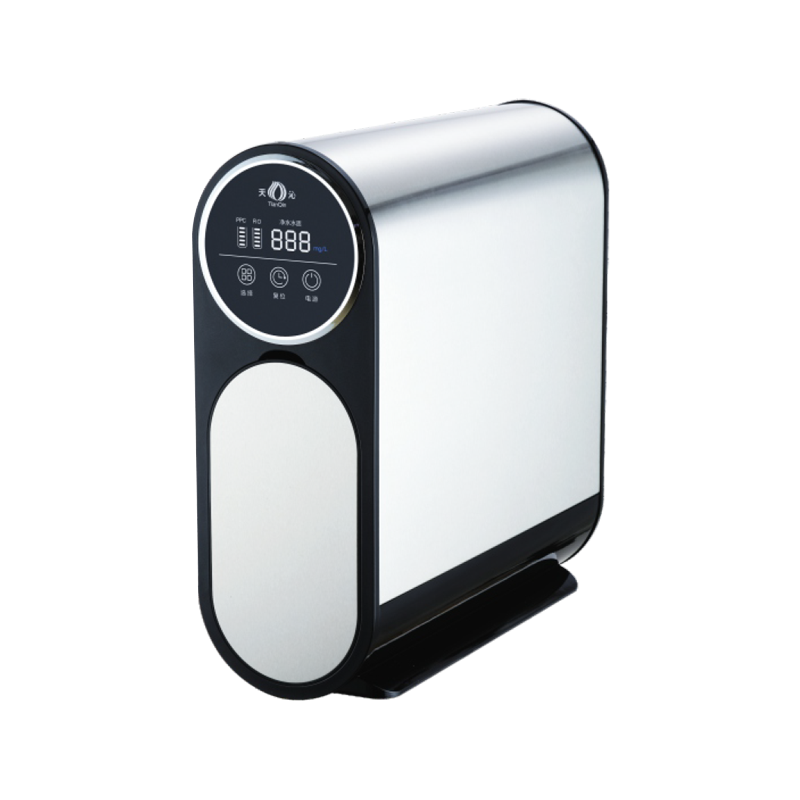 TQ-R03 Stainless Steel Booster Double Water Full Effect RO Water Purifier Cat:Stainless Steel Ro System
TQ-R03 Stainless Steel Booster Double Water Full Effect RO Water Purifier Cat:Stainless Steel Ro SystemTQ-R03 Stainless Steel Booster Double Water Full Effect RO Water Purifier is a household water purification device that combines efficient water purif...
See Details -
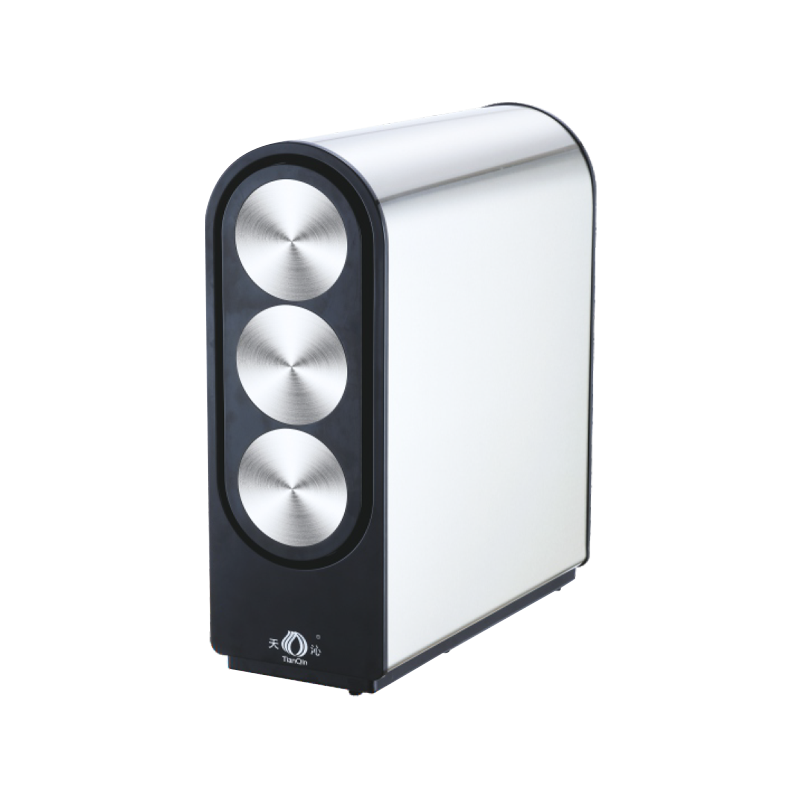 TQ-R05 Multifunctional Water Purification Source RO Water Purifier Cat:Stainless Steel Ro System
TQ-R05 Multifunctional Water Purification Source RO Water Purifier Cat:Stainless Steel Ro SystemThe TQ-R05 Multifunctional Water Purification Source RO Water Purifier is an advanced, versatile water purification solution designed for households a...
See Details -
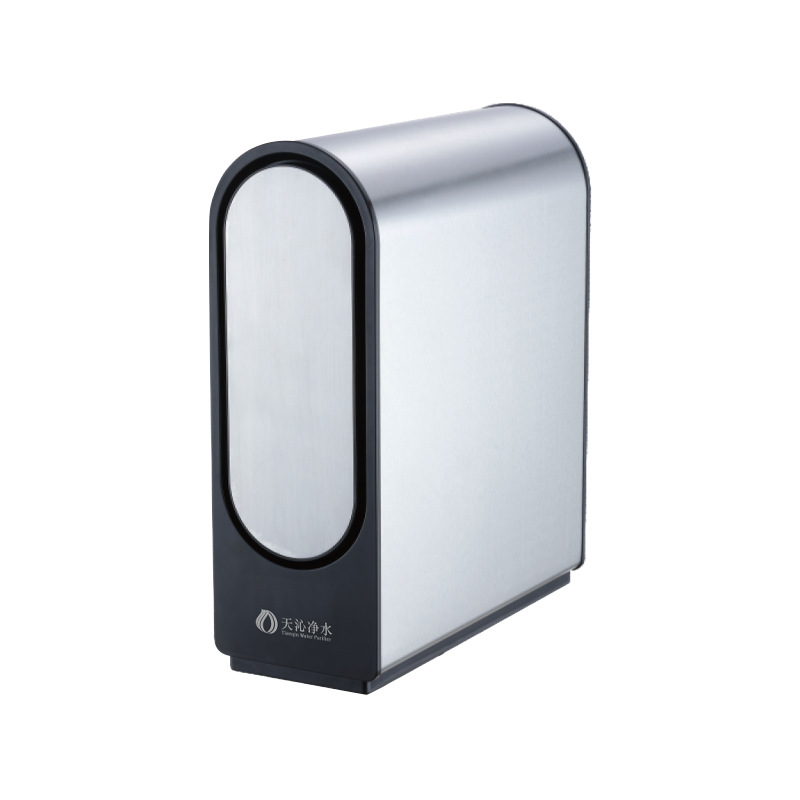 TQ-R06 Stainless Steel Environmentally Friendly RO Water Purifier Cat:Stainless Steel Ro System
TQ-R06 Stainless Steel Environmentally Friendly RO Water Purifier Cat:Stainless Steel Ro SystemThe TQ-R06 Stainless Steel Environmentally Friendly RO Water Purifier combines advanced RO filtration technology, durable stainless steel housing, and...
See Details -
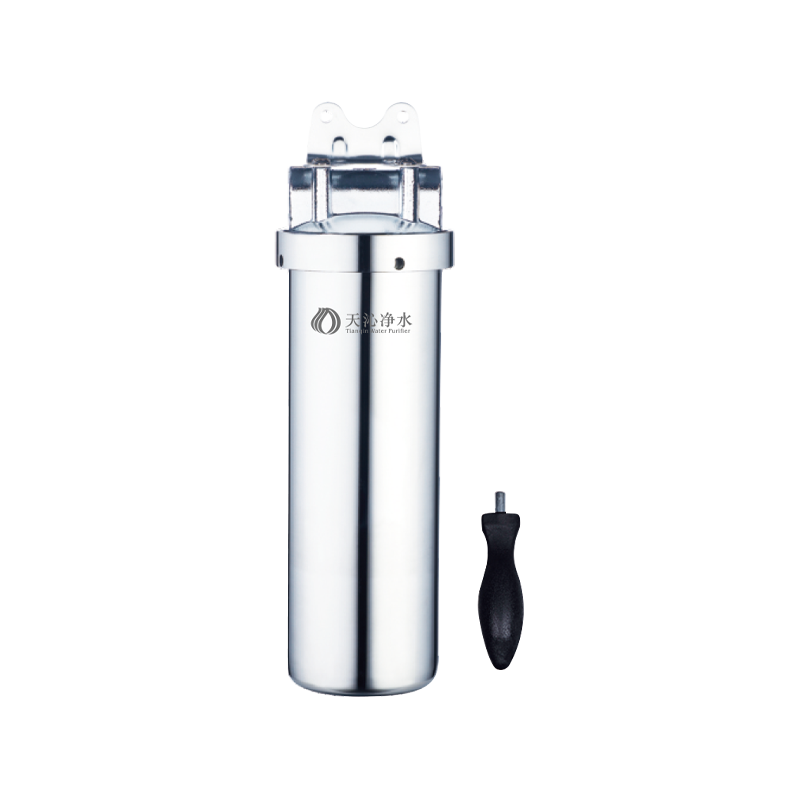 Stainless Steel Pure Double Water Pipe Water Purifier Cat:Stainless Steel Pipeline Water Purifier
Stainless Steel Pure Double Water Pipe Water Purifier Cat:Stainless Steel Pipeline Water PurifierThe Stainless Steel Pure Double Water Pipe Water Purifier is an advanced water purification system designed to provide dual-mode purified water with e...
See Details -
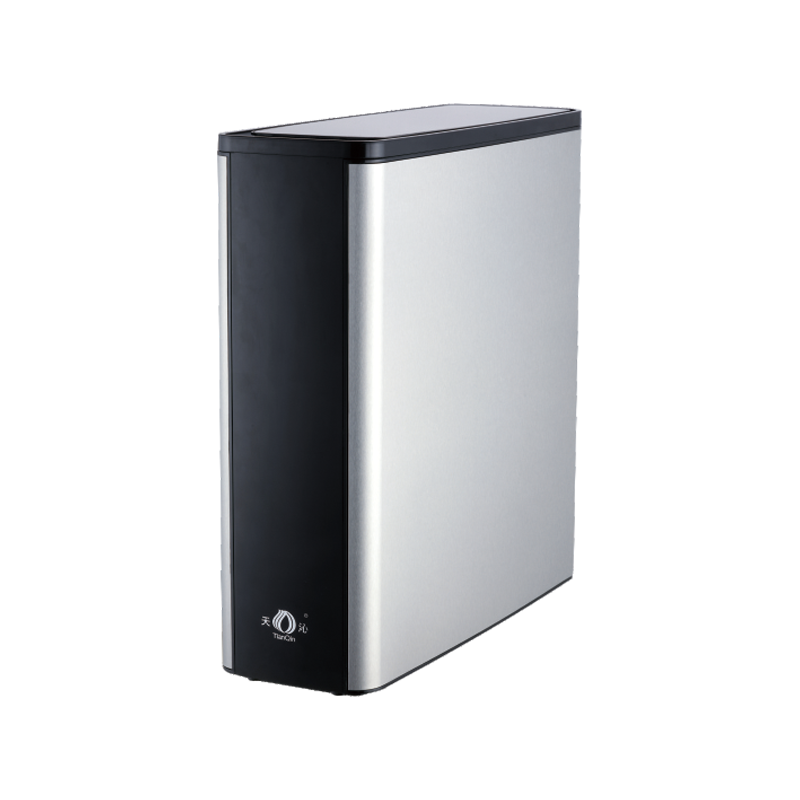 TQ-R08 Stainless Steel High-Flow RO Water Filter Cat:Stainless Steel Ro System
TQ-R08 Stainless Steel High-Flow RO Water Filter Cat:Stainless Steel Ro SystemThe Stainless Steel High-Flow RO Water Filter (TQ-R08) provides a powerful and effective solution for purifying drinking water, combining advanced rev...
See Details
How Faucet Ultrafiltration Systems Improve Water Taste and Safety for Everyday Use
Content
- 1 A New Era of Clean Water at Home
- 2 Understanding Ultrafiltration: The Science Behind the System
- 3 How Faucet Ultrafiltration Systems Work
- 4 Improving Water Taste: The Hidden Advantage
- 5 Enhancing Safety for Everyday Use
- 6 Key Benefits for Modern Households
- 7 The Technology Behind the Innovation
- 8 Market Outlook: Growing Demand for Compact Purification Systems
- 9 Challenges and Future Opportunities
A New Era of Clean Water at Home
Access to clean, safe, and great-tasting water is one of the most basic human needs — yet in many households around the world, tap water still carries impurities, unpleasant odors, or residual chlorine. While bottled water and traditional purifiers have long been used as solutions, consumers are increasingly looking for a more sustainable, efficient, and convenient alternative.
Enter the Faucet Ultrafiltration System — a compact, high-performance water purification technology that attaches directly to household faucets, delivering instant, pure, and better-tasting water. Combining advanced ultrafiltration membranes with intelligent flow design, these systems are reshaping how families access and enjoy clean water every day.
Understanding Ultrafiltration: The Science Behind the System
To appreciate how faucet ultrafiltration systems work, it’s essential to understand the core technology — ultrafiltration (UF).
Ultrafiltration is a physical separation process that uses a semi-permeable membrane with microscopic pores, typically between 0.01 and 0.1 microns in size. These pores are fine enough to block bacteria, rust, microplastics, and colloids while allowing essential minerals and healthy ions to pass through.
Unlike reverse osmosis (RO) systems, which remove almost everything — including beneficial minerals — ultrafiltration maintains the natural taste and nutritional value of water. It’s a low-pressure, energy-efficient filtration process that operates without electricity, making it ideal for compact, faucet-mounted devices.
Key features of ultrafiltration membranes include:
Microscopic filtration precision: Removes particles, bacteria, and turbidity.
High flow rate: Delivers purified water instantly without waiting.
No wastewater: 100% of the inlet water is filtered for use.
Durability: Membranes can last 12–24 months with proper maintenance.
This blend of effectiveness and efficiency makes ultrafiltration technology perfect for everyday household use.
How Faucet Ultrafiltration Systems Work
Faucet ultrafiltration systems are designed for simplicity and practicality. Unlike bulky under-sink purifiers, these compact units attach directly to the tap, providing on-demand clean water without complicated installation or plumbing.
A typical faucet ultrafiltration system operates through multiple filtration stages, such as:
Pre-Filter Layer:Captures large particles like sand, rust, and sediment that can cloud water or damage the main filter.
Activated Carbon Layer:Adsorbs chlorine, organic matter, and odors, dramatically improving water’s taste and smell.
Ultrafiltration Membrane (Core Stage):Removes bacteria, colloids, and microscopic impurities while preserving minerals like calcium and magnesium.
Post-Filtration (Optional):Some advanced models include an additional carbon block or mineralization cartridge to enhance water flavor and freshness.
Once water passes through these layers, it emerges clear, crisp, and safe — suitable for drinking, cooking, or making baby formula.
Improving Water Taste: The Hidden Advantage
While safety is the main goal of any filtration system, taste is equally important. After all, people are more likely to drink water that tastes pure and refreshing.
Faucet ultrafiltration systems significantly improve water taste in several ways:
Removal of Chlorine and Odors:Most municipal water supplies are disinfected with chlorine, which leaves a noticeable taste and smell. Activated carbon filters effectively absorb these compounds, restoring the natural flavor of water.
Elimination of Organic Impurities:Residual organic matter — even in trace amounts — can alter the taste of water. Ultrafiltration membranes trap these substances, leaving behind only clean H₂O and healthy minerals.
Preservation of Minerals:Unlike RO systems that strip away all minerals, ultrafiltration retains elements like calcium and magnesium, which contribute to the fresh, crisp mouthfeel associated with high-quality spring water.
No Stagnation or Storage:Because water is filtered instantly at the faucet, there’s no need for storage tanks — eliminating the risk of bacterial growth that can occur in standing water.
The result? Water that tastes as pure as bottled water, but delivered instantly and sustainably from your tap.
Enhancing Safety for Everyday Use
Taste alone isn’t enough — true water quality is defined by safety. Faucet ultrafiltration systems offer a reliable barrier against harmful contaminants commonly found in tap water.
Bacteria and Microorganisms
Ultrafiltration membranes block 99.99% of bacteria such as E. coli, Salmonella, and Legionella. This is particularly valuable in regions with inconsistent water quality or aging plumbing infrastructure.
Rust and Sediment
Old pipes can introduce rust particles and sediment into tap water. The pre-filter layer captures these impurities, ensuring the water remains visually clear and safe for consumption.
Microplastics and Suspended Solids
Microplastics have become a growing global concern. With pore sizes as small as 0.01 microns, UF membranes effectively remove these contaminants, providing cleaner, healthier water.
Heavy Metals and Chemicals (with Carbon Layer)
While ultrafiltration alone doesn’t remove dissolved heavy metals, combining it with activated carbon can adsorb lead, mercury, and volatile organic compounds (VOCs), further improving overall safety.
In combination, these processes deliver comprehensive protection for daily use — from drinking and cooking to washing fruits and baby bottles.
Key Benefits for Modern Households
Plug-and-Play Convenience
Faucet ultrafiltration systems are easy to install — typically within minutes — and require no tools or professional assistance. Their compact size makes them suitable for small apartments, dormitories, or mobile homes.
Cost Efficiency
Compared with bottled water or large-scale purifiers, faucet UF systems offer a lower cost per liter. Filters can purify hundreds of liters before replacement, reducing long-term expenses.
Sustainability
By replacing disposable plastic bottles, a single UF faucet system can prevent hundreds of plastic bottles from entering landfills each year. Many models use recyclable filter materials and non-toxic plastics, supporting eco-friendly living.
Continuous Flow, No Electricity
Since ultrafiltration works with water pressure alone, there’s no need for power supply or battery. This not only reduces energy consumption but also ensures consistent operation during power outages.
Stylish, Space-Saving Design
Today’s models feature sleek, minimalist designs that blend seamlessly with modern kitchen aesthetics — turning water purification into an elegant, visible lifestyle upgrade.
The Technology Behind the Innovation
Recent years have seen major advancements in faucet ultrafiltration design. Manufacturers are integrating smart monitoring systems and multi-layer composite membranes to improve both performance and user experience.
Smart Filter Indicators: Alert users when it’s time to replace cartridges, ensuring optimal filtration.
High-Flux Hollow Fiber Membranes: Increase water flow rate without compromising purity.
Anti-Bacterial Materials: Prevent microbial buildup inside the filter housing.
Quick-Change Cartridge Systems: Simplify filter replacement and maintenance.
These innovations make ultrafiltration systems not only functional but intelligent and user-friendly, aligning with the broader trend of smart home appliances.
Market Outlook: Growing Demand for Compact Purification Systems
The global market for household water purification is growing rapidly — and faucet ultrafiltration systems are among the fastest-rising categories.
According to Grand View Research, the global point-of-use water purifier market is expected to surpass USD 35 billion by 2030, with ultrafiltration products leading growth due to their low maintenance, high performance, and eco-friendly appeal.
Key market drivers include:
Rising awareness of waterborne diseases.
Increasing distrust in municipal water quality.
Rapid urbanization and compact living spaces.
Global sustainability initiatives to reduce plastic waste.
Regions such as Asia-Pacific, Europe, and North America are experiencing strong adoption rates, especially among tech-savvy consumers seeking efficient, low-waste water purification solutions.
Challenges and Future Opportunities
While the technology continues to advance, faucet ultrafiltration systems face challenges such as:
Filter lifespan management: Users must replace cartridges regularly to maintain quality.
Public awareness: Many consumers are still unfamiliar with the difference between UF, RO, and simple carbon filters.
Customization needs: Different water sources require specific filter configurations for best results.
Manufacturers are addressing these challenges by offering modular systems, improved membrane cleaning mechanisms, and smart sensors that optimize performance automatically.
As filtration materials evolve — including graphene-based and nano-fiber membranes — the next generation of faucet ultrafiltration systems will become even more efficient, affordable, and sustainable.



 English
English 中文简体
中文简体




